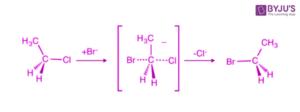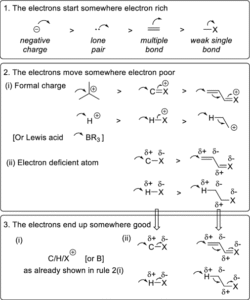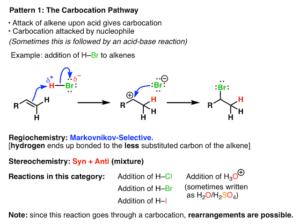Back to: Organic Chemistry 100 Level
Welcome to class!
Hello again, my brilliant learner! You’re doing an amazing job walking through the exciting world of Organic Chemistry. Today, we’re continuing from where we stopped in our last class. This lesson is Reaction Mechanisms II, and we’ll be focusing more on the types of organic reaction mechanisms and the specific ways molecules react. Don’t worry—just like before, we’ll keep everything simple, relatable, and packed with real-life connections.
Reaction Mechanisms II
Types of Organic Reaction Mechanisms
There are different ways organic molecules react, depending on the conditions and the compounds involved. Let’s look at the four major types of reaction mechanisms you’ll need to know.

1. Substitution Reactions
This happens when one atom or group in a molecule is replaced by another.
There are two main types:
SN1 (Substitution Nucleophilic Unimolecular)
Happens in two steps
Involves the formation of a carbocation (intermediate)
Common in tertiary (3°) carbons
Example: Hydrolysis of tert-butyl chloride
SN2 (Substitution Nucleophilic Bimolecular)
Happens in one step
The attacking group (nucleophile) pushes out the leaving group at the same time
Common in primary (1°) carbons
Example: Reaction of methyl bromide with hydroxide
2. Elimination Reactions
This is when two atoms or groups are removed from a molecule, forming a double bond.

There are two major types:
E1 (Elimination Unimolecular)
Happens in two steps
Forms a carbocation
Example: Dehydration of alcohols using heat and acid
E2 (Elimination Bimolecular)
Happens in one step
Strong base removes a hydrogen as the leaving group leaves
Example: Reaction of alkyl halides with strong base like NaOH
3. Addition Reactions
These are opposite of elimination. In this case, atoms or groups are added to a molecule, usually across a double or triple bond.
Example: Adding H₂ across an alkene to form an alkane (hydrogenation)
4. Rearrangement Reactions
Here, the structure of the molecule rearranges itself to form a more stable structure. This often happens during the formation of intermediates like carbocations.
Example: Rearrangement of carbocations during SN1 or E1 reactions
Real-Life Applications
When you cook with palm oil, some molecules in the oil undergo elimination and rearrangement as heat increases.
In drug design, chemists choose SN1 or SN2 depending on how fast they want a drug to break down or absorb.
Hair relaxers and soaps work through controlled chemical reactions like substitution and elimination!
How to Recognise Each Reaction
If something is replaced → it’s substitution.

If a double bond is formed → it’s elimination.
If a double bond breaks and new atoms are added → it’s addition.
If the structure changes shape → it’s rearrangement.
Summary
- Organic reactions follow different mechanisms: substitution, elimination, addition, and rearrangement.
- SN1 and SN2 are types of substitution.
- E1 and E2 are types of elimination.
- Rearrangement changes the position of atoms in a molecule.
- Recognising the type of reaction helps predict the product and reaction path.
Evaluation
- What are the four main types of organic reaction mechanisms?
- How is SN1 different from SN2?
- Which reaction adds atoms across a double bond?
- Give an example of a rearrangement reaction.
- What type of reaction removes two atoms and forms a double bond?
You’re on fire! Honestly, you’re learning things that many university students find challenging—but here you are, breaking it down like a true Afrilearn scholar. Keep your confidence up and your curiosity alive. You’re becoming a chemistry genius, one class at a time. See you in the next session, and remember: you’re capable of amazing things!
